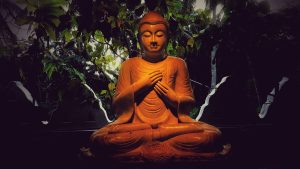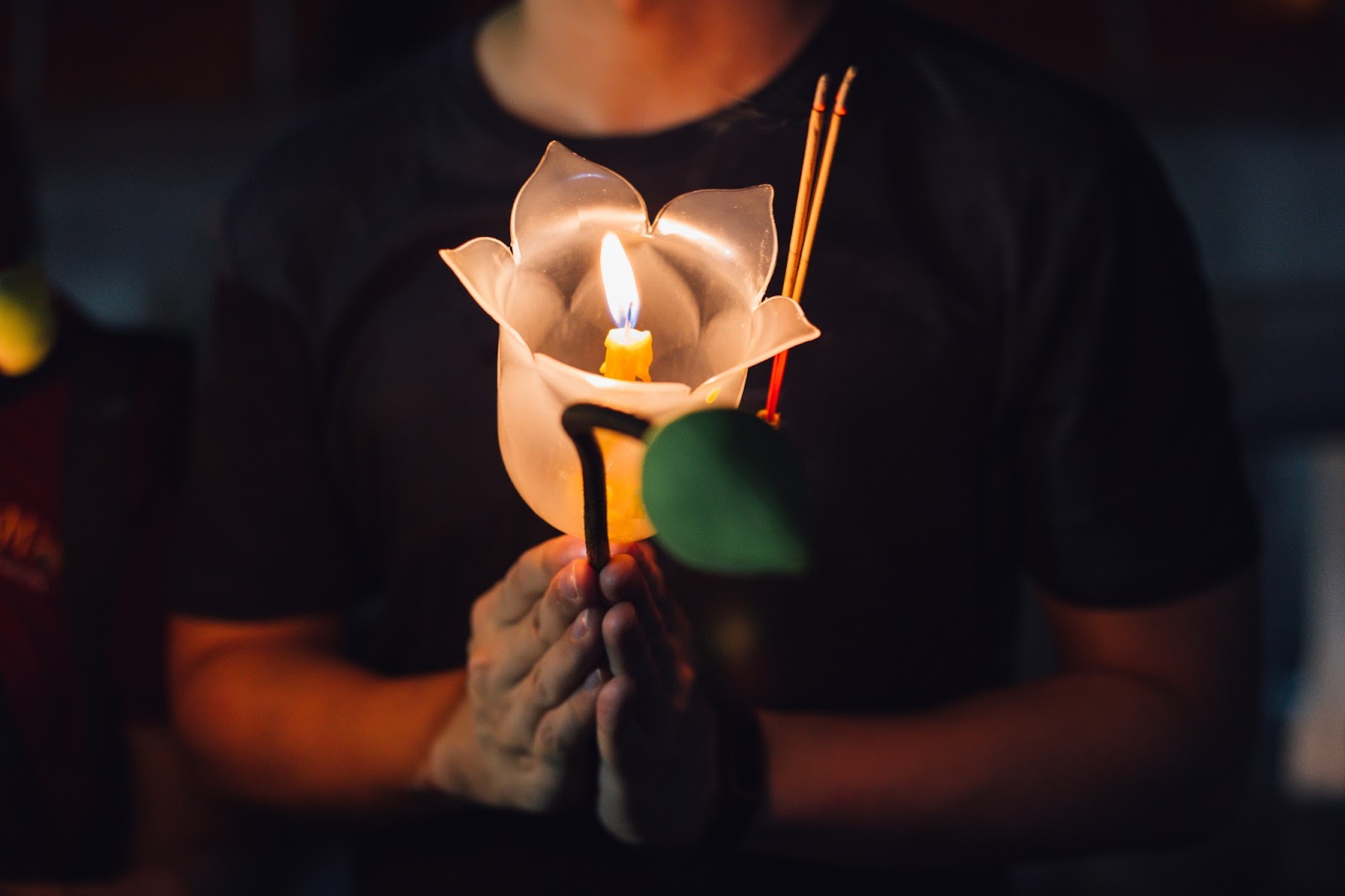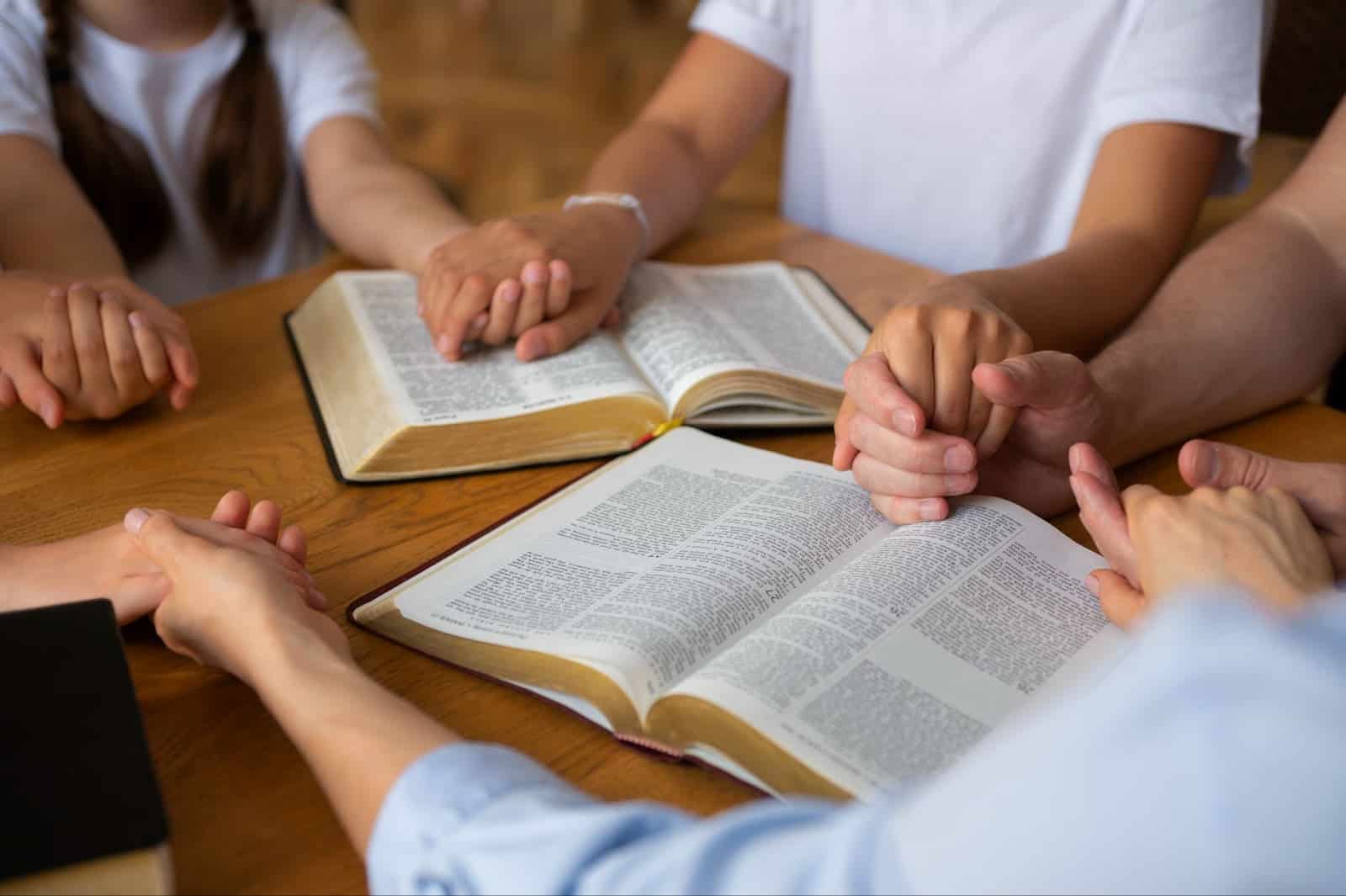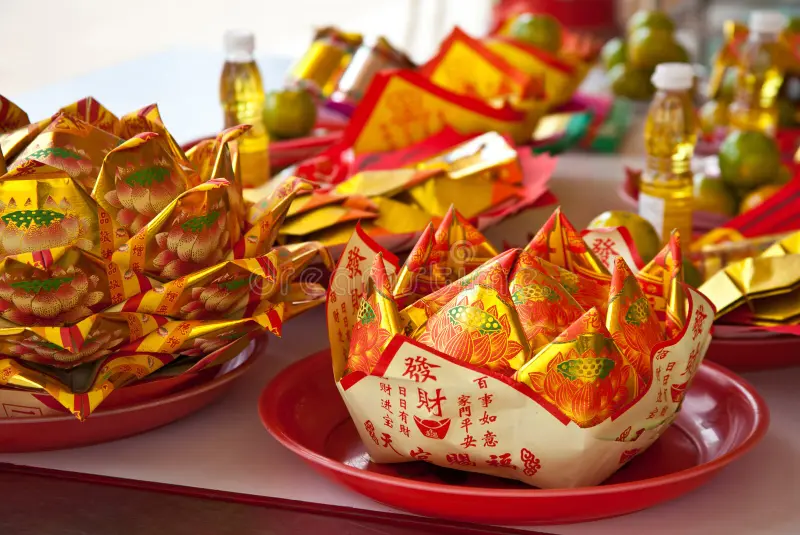In the intricate mosaic of human beliefs and practices surrounding death, Buddhist philosophy emerges as a profound and unique perspective. This exploration delves into the captivating realm of Buddhist funeral ceremonies, shedding light on the profound beliefs that underpin them. With death viewed as a transformative journey rather than an absolute end, Buddhism weaves a narrative that transcends mortality. This article aims to unravel the intricate threads of Buddhist funeral Singapore practices, unveiling the rituals and symbolism that guide the departed through their transitional phase and offer solace to the living. Through this journey, we uncover how these ceremonies not only honor the departed but also embody the timeless pursuit of understanding the profound enigma of existence and the transcendent nature of life and death.
Buddhist Belief and Concept of Death (Saṃsāra)
The Buddhist perspective on death, encapsulated in the concept of samsara or saṃsāra (in Sanskrit), paints a profound picture of existence’s cyclical nature. Life is a series of interconnected births, lives, deaths, and rebirths, driven by the law of karma – where actions in one life shape the circumstances of the next.
Death, far from an endpoint, marks a transition within this cycle. It signifies the passage to another life, a step towards the ultimate goal: Nirvana. This state of enlightenment represents freedom from desires and suffering, breaking the cycle of saṃsāra.
Buddhist funeral practices reflect this belief. Through rituals and offerings, the living guide the departed through the transitional phase, aiming to aid their journey toward a positive rebirth.
Understanding Saṃsāra and the Six Realms in Buddhism

The six realms depicted in the Wheel of Life (bhavachakra), clockwise from top: the god realm, the demigod realm, the hungry ghost realm, the hell realm, the animal realm, and the human realm.
(Source: Tricycle & Kandukuru Nagarjun)
Saṃsāra: The Cycle of Existence
At the core of Buddhist philosophy lies the concept of saṃsāra, a profound understanding of the eternal cycle of existence. Saṃsāra represents the perpetual journey of birth, life, death, and rebirth that all living beings traverse. This cycle is driven by the law of karma, where actions and intentions in one life shape the circumstances of the next.
Buddhism views saṃsāra as a realm of suffering and impermanence. The ceaseless cycle perpetuates the attachment to desires, leading to ongoing dissatisfaction and sorrow. The ultimate goal of Buddhist practice is to break free from saṃsāra’s grip and attain Nirvana, a state of complete liberation and enlightenment.
The Six Realms: Diverse States of Existence
Within the intricate tapestry of saṃsāra, Buddhism delineates the six realms – distinct states of existence that individuals may inhabit based on their karma and actions. These realms represent different levels of consciousness and experiences, each characterized by its own unique challenges and lessons.
God Realm (Deva): Inhabitants of this realm experience immense pleasure and abundance but remain susceptible to arrogance and complacency, potentially hindering spiritual growth.
Jealous / Demi God Realm (Asura): Asuras are marked by competitiveness and a perpetual state of conflict. Despite their power, they are trapped in a cycle of envy and aggression.
Human Realm (Manussa / Manusya): Our realm, where sentient beings experience both pleasure and pain, presents an opportunity for spiritual progress and enlightenment.
Animal Realm (Tiracchāna / Tiryagyoni): Beings in this realm are driven by instincts, often consumed by survival and unawareness.
Hungry Ghost Realm (Preta): Pretas endure insatiable desires and perpetual hunger, symbolizing extreme attachment and suffering.
Hell Realm (Niraya / Naraka): Inhabitants of this realm undergo intense suffering due to their negative karma, serving as a purgatorial state.
The six realms serve as metaphors for different mental and emotional states that individuals may inhabit, highlighting the cyclical nature of existence. Buddhists aspire to transcend these realms through understanding and wisdom, ultimately reaching liberation from saṃsāra’s cycle and attaining Nirvana.
The Significance of Buddhist Funeral Ceremonies

Buddhist funeral ceremonies hold profound meaning, serving as a bridge between life and the afterlife. These rituals embody three key aspects:
Respect and Merit
Funeral ceremonies are a way to pay respect to the departed and generate positive merit. By participating, individuals create positive karma that can benefit both the deceased and themselves.
Reflection on Impermanence and Karma
Death’s impermanence is contemplated through funeral rituals, prompting attendees to consider the transient nature of life. This reflection emphasizes the importance of actions and their consequences, encouraging a deeper understanding of karma.
Compassion and Support
Funeral ceremonies express compassion by bringing communities together to share in grief and offer support. This collective empathy helps mourners navigate the emotional journey and offers spiritual assistance to the departed in their transition.
In essence, Buddhist funeral ceremonies embody respect, reflection, and compassion, fostering a sense of interconnectedness while addressing the profound mysteries of life, death, and beyond.
Elements of a Buddhist Funeral Ceremony
A Buddhist funeral ceremony is a tapestry woven with intricate elements that reflect the spiritual depth of Buddhist beliefs and traditions. Each component serves to honor the departed, provide solace to the living, and guide the transition into the next realm.
Chanting, Prayers, and Eulogies
The chanting of sacred sutras and recitation of prayers form the heart of a Buddhist funeral ceremony. These invocations create a serene and sacred atmosphere, invoking blessings and guidance for the departed on their journey. Eulogies, delivered by family members or officiants, celebrate the life of the deceased, highlighting their virtues and contributions.
Role of Monks or Officiants
Monks or officiants plays a pivotal role in guiding the funeral ceremony. Their presence lends spiritual authority and knowledge. They lead the rituals, offering guidance on proper conduct and delivering Dhamma talks – teachings that remind attendees of life’s impermanence, the importance of virtuous actions, and the pursuit of enlightenment.
Symbolic Offerings
The act of offering holds profound symbolism in Buddhist funeral ceremonies. Offerings of candles, incense, flowers, and symbolic food items symbolize the impermanence of life, the illumination of wisdom, the purity of intentions, and the continuity of existence. These offerings demonstrate respect for the departed and create a harmonious connection between the worlds.
Sharing Merits and Dedication
A unique aspect of Buddhist funeral ceremonies is the practice of sharing merits. Attendees engage in virtuous actions, such as meditation and chanting, dedicating the positive energy generated to the deceased. This act is believed to provide spiritual support in their journey through the afterlife and contribute to their favorable rebirth. It also serves as a reminder of the interconnectedness between the living and the departed.
Essential Buddhist Funeral Etiquette
Attending a Buddhist funeral requires a deep respect for the cultural and spiritual customs that guide the ceremony. Adhering to these etiquettes is a mark of reverence for the departed, the family, and the Buddhist tradition itself. Here are key aspects of Buddhist funeral etiquette to consider:
1) Dress Conservatively
Choose modest, somber attire in dark or muted colors. Avoid flashy or overly casual clothing, as it’s essential to show respect and sensitivity.
2) Remove Footwear
Before entering the designated area, remove your footwear as a sign of respect for the sacred space and the solemnity of the occasion.
3)Silence and Decorum
Maintain a respectful demeanor throughout the ceremony. Speak softly, if at all, and avoid disruptive behavior, as the atmosphere is focused on reflection and prayers.
4) Follow Cultural Customs
Different Buddhist traditions may have specific customs and rituals. Observe and follow these practices as a sign of respect for the deceased and their family.
5) Participate Mindfully
If there are rituals, prayers, or chanting involved, you can join in if you’re comfortable doing so. If you’re unsure, it’s perfectly acceptable to stand or sit quietly and respectfully.
6) Offer Condolences
Extend your condolences to the family members, either through a gentle touch, a nod, or a kind word. Expressing your sympathy shows your support and empathy.
7) Give Offerings
If allowed, you can contribute symbolic offerings like flowers, incense, or candles. These offerings carry a spiritual significance and demonstrate your respect for the deceased.
8) Bowing and Kneeling
If appropriate, you may bow or kneel as a sign of respect, especially during crucial moments such as chanting or when approaching the casket.
9) Be Mindful of Technology
Refrain from using phones or other electronic devices during the ceremony. The focus should be on paying respects and reflecting.
10) Offering Support
Funerals can be emotionally challenging. Offer your support to grieving family members and friends, whether through kind words, a hug, or simply being present.
11) Depart with Respect
When leaving, do so quietly and respectfully. Avoid rushing out, as it may disrupt the atmosphere of the ceremony.
What to Expect In & Steps of a Typical Buddhist Funeral Ceremony

(Source: Unsplash)
A typical Buddhist funeral ceremony encompasses several key stages. The ceremony commences with a solemn welcome, gathering family and attendees to establish a spiritual ambiance. Eulogies and heartfelt remembrances follow, honoring the departed through shared stories and cherished memories. Sacred chants and prayers permeate the atmosphere, invoking blessings and guiding the deceased. A Dhamma talk by a respected monk imparts Buddhist teachings, fostering reflection and spiritual guidance. Symbolic offerings symbolizing respect are made, while meditation and reflection encourage contemplation of life’s impermanence. A final viewing grants closure, and the body is either cremated or buried as per customs. Attendees often convene for post-funeral support and communal connection, leading to a period of mourning and acts of merit in the subsequent days, dedicated to the departed’s journey.
How Long Is a Buddhist Funeral
During a Buddhist funeral, the duration can vary, aiming to honor the departed with the utmost respect. Traditional ceremonies, filled with heartfelt chants, prayers, and memories, generally last a few hours. The tender memorial services held on later days are shorter, about an hour, where shared reflections offer solace. As the poignant rituals of cremation or burial unfold, taking their time, the entire process carries a sense of reverence that transcends clocks. If a viewing is held, moments to say goodbye are treasured. Following these solemn moments, a gathering brings together those who care, sharing nourishment for the body and soul. In this delicate time, the length of the ceremony embraces the individuality of the departed and the compassion of those left behind, offering a gentle embrace of understanding and support.
Buddhist Views on Grief and Healing

(Source: Unsplash)
In Buddhism, grief is acknowledged as a natural and universal human emotion that accompanies loss. However, the perspective on grief is rooted in the understanding of impermanence and the cyclical nature of existence. Buddhists believe that attachment and suffering arise from not recognizing the transient nature of life. Grief, therefore, can be seen as an opportunity for introspection and spiritual growth.
Healing in Buddhism is approached through a combination of contemplative practices, community support, and compassionate self-care. Meditation is a powerful tool to navigate grief, allowing individuals to cultivate mindfulness, acceptance, and a deeper understanding of impermanence. Engaging in acts of merit, such as dedicating positive actions to the departed, is believed to benefit both the living and the deceased.
Supporting a Grieving Family during a Buddhist Funeral
Your presence and compassion are invaluable during this challenging time. Be a comforting presence, offering a listening ear and a supportive shoulder to lean on. Approach the funeral with respect and understanding, familiarizing yourself with Buddhist customs and etiquette if you attend. Consider bringing symbolic offerings like flowers, candles, or incense to honor their spiritual beliefs. Engaging in acts of kindness, dedicating merits, or offering assistance in practical matters can provide meaningful support. Remember that grief persists beyond the funeral; continue offering your care through regular check-ins and a compassionate ear in the weeks and months ahead.
Buddhist Mourning Period
The duration of a Buddhist mourning period can vary based on cultural and personal factors. Traditionally, a mourning period of 49 days is observed, representing the intermediate state between death and rebirth. During this time, prayers, rituals, and acts of merit are performed to aid the deceased’s transition. However, modern practices may have shorter mourning periods.
Buddhist mourning involves engaging in virtuous activities, cultivating compassion, and dedicating merits. Family and friends may also engage in almsgiving, meditation, and attending Dhamma talks to support their healing process.
How Can You Continue to Honor the Deceased After the Funeral
There are heartfelt ways to keep the memory of our loved ones alive. We can take moments to remember the good times, light a candle or incense as a symbol of our connection, do kind deeds and dedicate positive vibes to them, feel their presence during meditation, mark a special day each year to honor them, learn about what they valued and share it with others, support eco-friendly causes as a nod to their legacy, show kindness to others as they did, share stories with family to keep their memory vibrant and strive to grow and find peace as a way of carrying their spirit with us.









